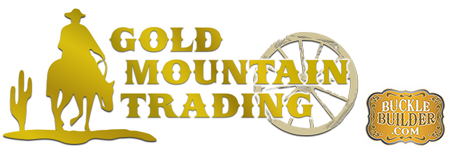 $100 min purchase Continental U.S. only
$100 min purchase Continental U.S. only 
Kokopelli: The Ancient Casanova
By Marv Baskin
As published in The Desert Advocate
"Koko-who?"
"Kokopelli," I sez.
I git the question at least once a day, when a bus load o' europeens or midwesterners
drop on by. They seen him everywhere in Arizona, and our store ain't no exception,
where we got him in gold inlaid earrings or even straddlin' a Harley on a silver
pin. So who or what was Kokopelli?
Rock paintings (petroglyphs) of this humpbacked flute player are found from
way down in Peru to all the way up into Canada!
But nowhere was he more popular (and still is) than in our own Desert Southwest,
where thousands o' Kokopelli portraits are on our canyon walls and rocks. He's
found in pithouse ruins from as early as 200 A.D. to petroglyphs as recent as
the 16th century.
Kokopelli shows up in all kinds o' ways. In one place in New Mexico, fer instance,
he's a humpbacked rabbit but, in Holbrook, Arizona, he's a-wearin' … a
kilt! At Sand Island, Utah he's a flute-playin' mountain sheep and on rock art
in the Arizona's Petrified Forest and Canyon de Chelly, Kokopelli turns up with
a bird for a head.
American Indian stories tell us that Kokopelli would arrive in villages playin'
his flute - just like the Peruvians do to this day - carryin' songs on his back.
He'd git everyone all riled up. They'd be hootin' 'n hollerin', singin' 'n dancin'
the night away. But come mornin' time the villagers would awaken to find their
new pal Kokopelli gone, their corn fields four feet tall, and all the women
pregnant!
Gotta admit: it's hard not to love this guy.
Now, if yer plannin' on gittin' a good sleep at one o' the many campin' sites
right near some Kokopelli art, take this friendly warnin' from a wise an' grizzled
Arizonan: If, durin' the night, ya hear the sweet, seductive tones of a flute,
ya'll better lock up yer wives 'n daughters.
So how'd he git such a funny name? The Hopi call him Kokopilau: "Koko"
for wood and "pilau" for hump, which was the bag o' seeds he's always
carryin' around. But the story I fancy best comes from the Zuni name for God,
"Koko," and the name for the desert robber fly, "pelli".
Ya see, the desert robber fly has a humped back and a prominent nose, lookin'
fer all the world not unlike them Kokopelli rock paintings.
The Hopi will tell ya his hump contains the seeds of all the plants in the
world, which is one reason he's a symbol fer fertility. Other pueblos tell us
his bag holds songs, and he hauls hither and yon cuz he likes tradin' 'em out
fer other songs.
The Kokopelli Kachina is the oldest Kachina of the Hopi tribe, older than all
other Kachinas put together. This is one explanation for why he has a humped
back, and he has to use his cane to get around.
Koko-who, indeed!
